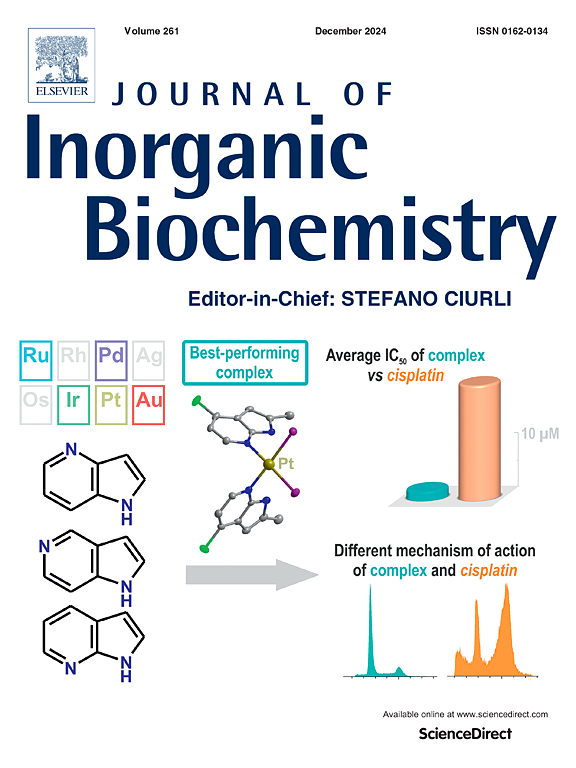Repaglinide platinum(IV) conjugates: Enhancing p53 signaling for antitumor and antimetastatic efficacy
IF 3.2
2区 化学
Q2 BIOCHEMISTRY & MOLECULAR BIOLOGY
引用次数: 0
Abstract
The tumor suppressor p53 plays multiple roles at the crossroads of suppressing tumor development and metastasis. Here, a series of Repaglinide platinum(IV) conjugates promoting the p53 pathway were designed and prepared, which displayed potent antiproliferative and antimetastatic activities both in vitro and in vivo. Mechanistically, the expression of p53 was upregulated by the synergistic functions of the platinum core through causing severe DNA damage, and the RPG ligand via stimulating the lumican/p53/p21 pathway. The mitochondria-mediated apoptosis was initiated, involving the Bcl-2/Bax/caspase pathway. Pro-death autophagy was initiated with the upregulation of LC3II and down regulation of p62. Additionally, angiogenesis was suppressed by reversing tumor inflammation through the inhibition of key enzymes COX-2, MMP9, and VEGFA. Furthermore, antitumor immunity was enhanced by blocking the immune checkpoint PD-L1, which led to an increased presence of CD3+ and CD8+ T-cells within the tumor microenvironment.

瑞格列奈铂(IV)偶联物:增强p53信号传导抗肿瘤和抗转移疗效
肿瘤抑制因子p53在抑制肿瘤发展和转移的十字路口起着多重作用。本研究设计并制备了一系列促进p53通路的瑞格列奈铂(IV)偶联物,这些偶联物在体外和体内均显示出强大的抗增殖和抗转移活性。机制上,p53的表达上调是通过铂核的协同作用引起严重的DNA损伤,而RPG配体的表达上调是通过刺激lumican/p53/p21通路。线粒体介导的细胞凋亡启动,涉及Bcl-2/Bax/caspase途径。凋亡前自噬通过LC3II的上调和p62的下调而启动。此外,通过抑制关键酶COX-2、MMP9和VEGFA来逆转肿瘤炎症,从而抑制血管生成。此外,通过阻断免疫检查点PD-L1增强抗肿瘤免疫,这导致肿瘤微环境中CD3+和CD8+ t细胞的存在增加。
本文章由计算机程序翻译,如有差异,请以英文原文为准。
求助全文
约1分钟内获得全文
求助全文
来源期刊

Journal of Inorganic Biochemistry
生物-生化与分子生物学
CiteScore
7.00
自引率
10.30%
发文量
336
审稿时长
41 days
期刊介绍:
The Journal of Inorganic Biochemistry is an established international forum for research in all aspects of Biological Inorganic Chemistry. Original papers of a high scientific level are published in the form of Articles (full length papers), Short Communications, Focused Reviews and Bioinorganic Methods. Topics include: the chemistry, structure and function of metalloenzymes; the interaction of inorganic ions and molecules with proteins and nucleic acids; the synthesis and properties of coordination complexes of biological interest including both structural and functional model systems; the function of metal- containing systems in the regulation of gene expression; the role of metals in medicine; the application of spectroscopic methods to determine the structure of metallobiomolecules; the preparation and characterization of metal-based biomaterials; and related systems. The emphasis of the Journal is on the structure and mechanism of action of metallobiomolecules.
 求助内容:
求助内容: 应助结果提醒方式:
应助结果提醒方式:


